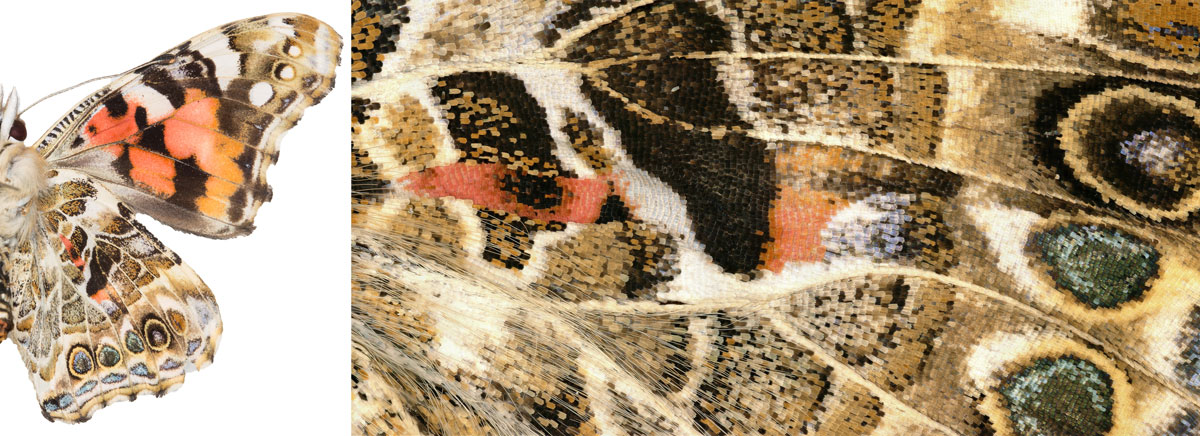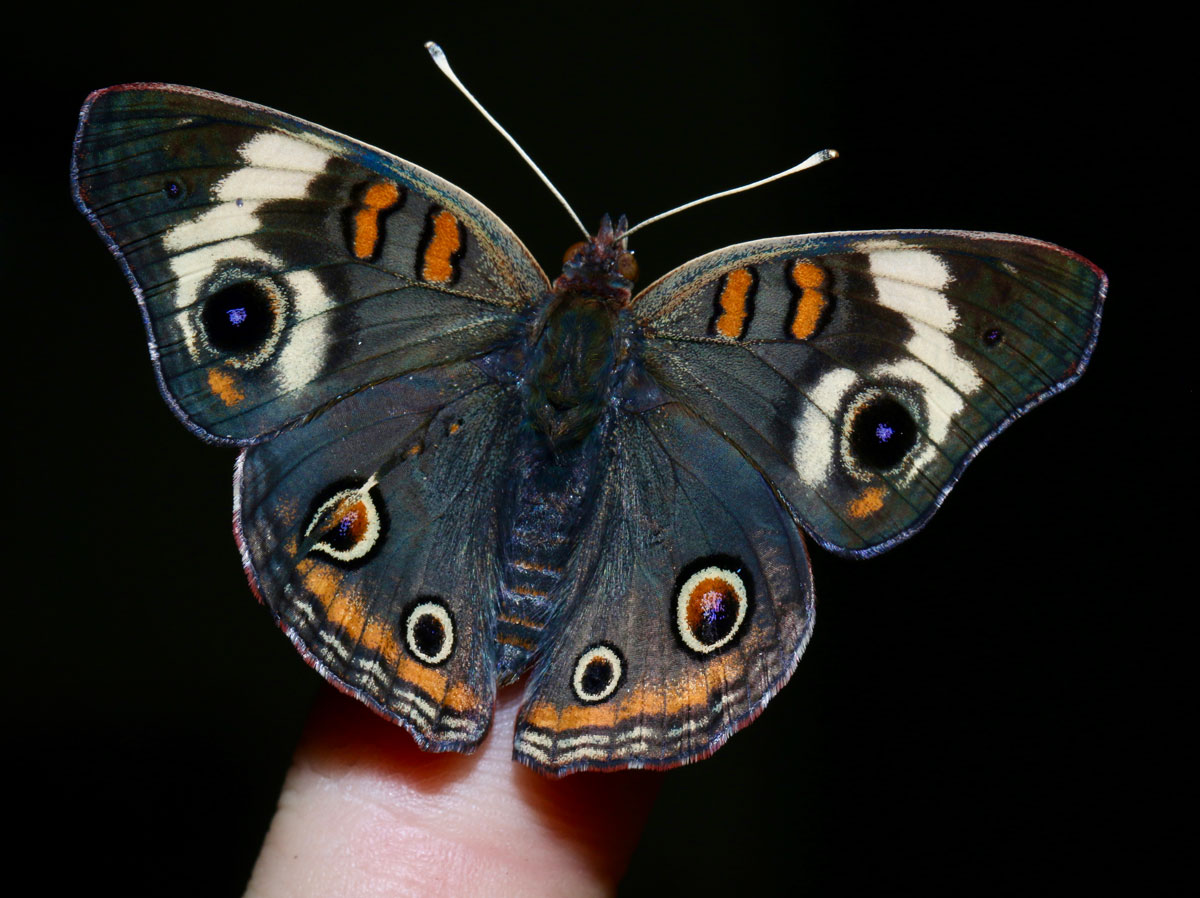How to Make a Butterfly: Team Uses CRISPR to Knock Out Gene for Hindwing Identity

The forewings and hindwings of butterflies and moths (Lepidoptera) are different from each other, with color patterns and morphologies that mediate a wide range of functions in flight, signaling, and protection.
 A closer look at the partial Ubx CRISPR mutation in the Painted Lady butterfly (Vanessa cardui). The red scales are typically found on the forewing, but with the Ubx gene knocked out in the hindwing, the scales transformed into forewing scale colors and patterns. Credit: Aaron Pomerantz
A closer look at the partial Ubx CRISPR mutation in the Painted Lady butterfly (Vanessa cardui). The red scales are typically found on the forewing, but with the Ubx gene knocked out in the hindwing, the scales transformed into forewing scale colors and patterns. Credit: Aaron PomerantzTo explore the genetics that determine these differences, a team including MBL Director Nipam Patel and Ph.D. candidate Aaron Pomerantz used CRISPR-Cas9 genome editing to disable a Hox gene, Ultrabithorax (Ubx), in two species of butterfly (Junonia coenia, Vanessa cardui) and a moth (Plodia interpunctella). In the resulting mutants, they found, the hindwings had transformed into forewings in some respects. This showed that Ubx is necessary for specifying many aspects of hindwing-specific identities, including morphology of wing scales, color patterns, and wing vein arrangement and structure.
 The Buckeye butterfly (Junonia coenia) with a partial Ubx gene knockout. Note the stripe with two orange spots going through the left hindwing, which resembles the pattern found on the forewing. Credit: Aaron Pomerantz
The Buckeye butterfly (Junonia coenia) with a partial Ubx gene knockout. Note the stripe with two orange spots going through the left hindwing, which resembles the pattern found on the forewing. Credit: Aaron PomerantzThe study, published this week, confirms that Ubx is a “master selector” of Lepidoptera hindwing identity, and suggests it acts on many gene regulatory networks involved in wing development and patterning.
Amruta Tendolkar, et al. (2021) Ultrabithorax Is a Micromanager of Hindwing Identity in Butterflies and Moths. Front. Ecol. Evol. DOI: 10.3389/fevo.2021.643661